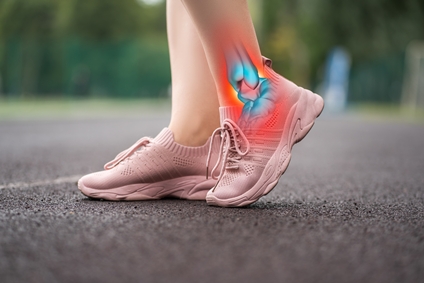Achilles Tendinitis: Risk Factors & Prevention

Tennis, pickleball, basketball — many of the court sports can be rough on feet and legs. If you are experiencing tenderness or pain, be careful not to overdo it and be aware of how Achilles tendinitis can present.
Achilles tendinitis typically begins as a mild ache in the back of the leg or above the heel after sports activities. Achilles tendinitis is caused by repetitive or intense strain on the Achilles tendon, the band of tissue that connects your calf muscles to your heel bone. This tendon is used when you walk, run, jump or push up on your toes. The structure of the Achilles tendon can weaken with age, which can make it more susceptible to injury.
Risk Factors
Several factors may increase your risk of Achilles tendinitis, including:
- Being male.
- Age-related risk.
- A naturally flat arch in your foot can put more strain on the Achilles tendon. Obesity and tight calf muscles also can increase tendon strain.
- Running in worn-out shoes can increase your risk. Tendon pain occurs more frequently in cold weather than in warm weather, and running on hilly terrain also can predispose you to injury.
- People who have psoriasis or high blood pressure.
- Certain types of antibiotics, called fluoroquinolones, have been associated with higher rates of risk.
- Achilles tendinitis can weaken the tendon, making it more vulnerable to a tear (rupture) — a painful injury that usually requires surgical repair.
Prevention
Increase your activity level gradually. If you’re beginning an exercise regimen, start slowly and gradually increase the duration and intensity of the training.
Avoid activities that place excessive stress on your tendons, such as hill running. If you notice pain during a particular exercise, stop and rest.
The shoes you wear while exercising should provide adequate cushioning for your heel and have a firm arch support to help reduce tension in the Achilles tendon.
Take time to stretch and strengthen your calf muscles to better enable them to handle the stresses they encounter from activity and exercises.
